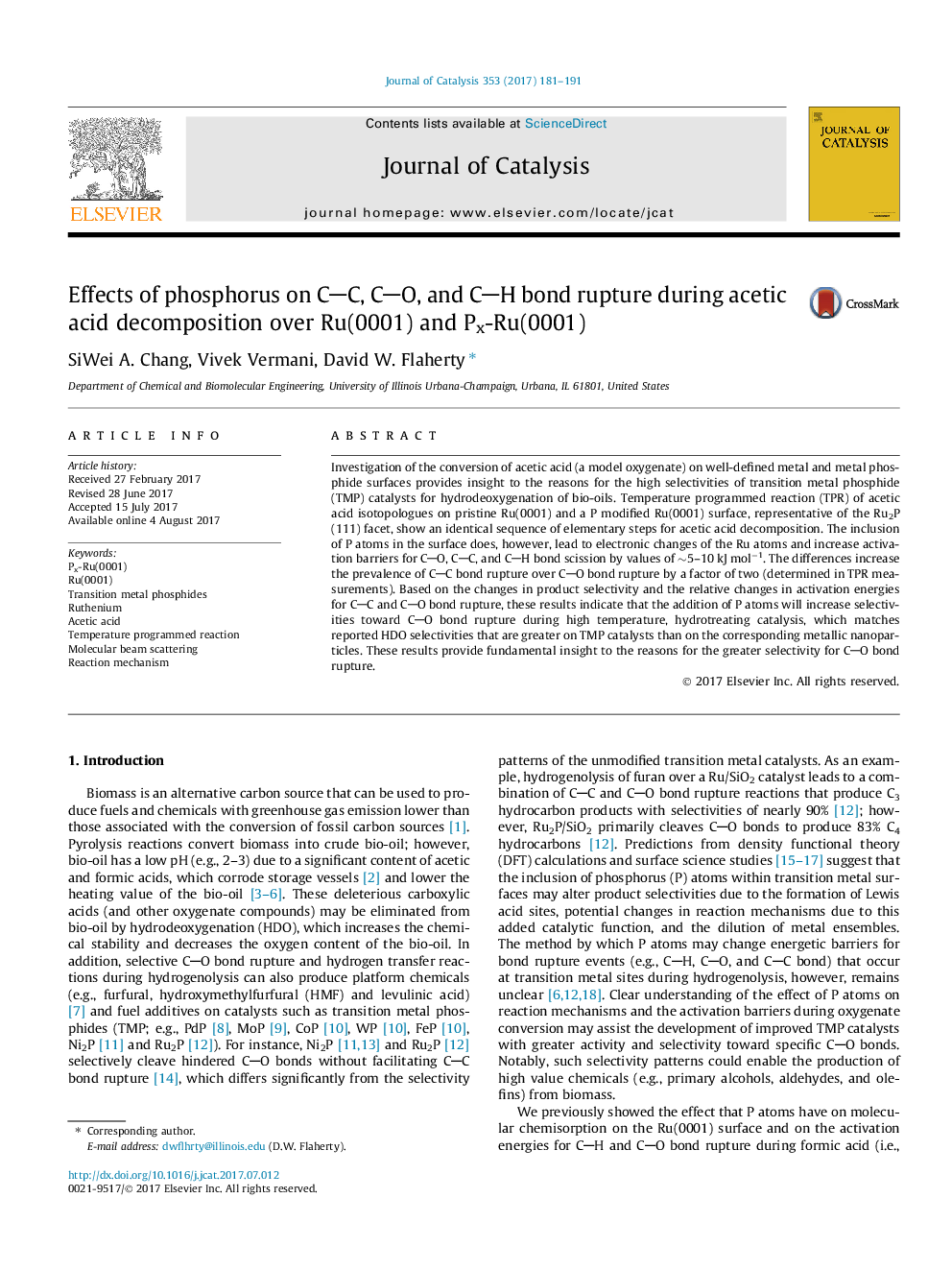| Article ID | Journal | Published Year | Pages | File Type |
|---|---|---|---|---|
| 6455577 | Journal of Catalysis | 2017 | 11 Pages |
â¢Acetic acid decomposition mechanisms are identical on Ru(0001) and Px-Ru(0001).â¢P atom incorporation increases energy barriers for CC, CO, and CH rupture.â¢P atoms increase the intrinsic Eact of CO bond rupture more than CC bond rupture.â¢P atom incorporation decreases CO:CO2 ratio during acetic acid decomposition.
Investigation of the conversion of acetic acid (a model oxygenate) on well-defined metal and metal phosphide surfaces provides insight to the reasons for the high selectivities of transition metal phosphide (TMP) catalysts for hydrodeoxygenation of bio-oils. Temperature programmed reaction (TPR) of acetic acid isotopologues on pristine Ru(0001) and a P modified Ru(0001) surface, representative of the Ru2P(111) facet, show an identical sequence of elementary steps for acetic acid decomposition. The inclusion of P atoms in the surface does, however, lead to electronic changes of the Ru atoms and increase activation barriers for CO, CC, and CH bond scission by values of â¼5-10Â kJÂ molâ1. The differences increase the prevalence of CC bond rupture over CO bond rupture by a factor of two (determined in TPR measurements). Based on the changes in product selectivity and the relative changes in activation energies for CC and CO bond rupture, these results indicate that the addition of P atoms will increase selectivities toward CO bond rupture during high temperature, hydrotreating catalysis, which matches reported HDO selectivities that are greater on TMP catalysts than on the corresponding metallic nanoparticles. These results provide fundamental insight to the reasons for the greater selectivity for CO bond rupture.
Graphical abstractDownload high-res image (65KB)Download full-size image
